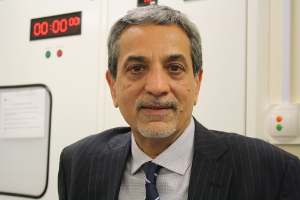An endoscopic procedure involves the passage of a flexible fibreoptic telescope into the gastrointestinal tract to visualise the lining and in certain situations may allow operations to be performed. If the gullet, stomach and duodenum are to be inspected (gastroscopy) an endoscope about the size of your little finger is passed through the mouth and into each of these organs. For examination of the large bowel (colonoscopy) a longer endoscope is required and this is passed through the back passage around the whole length of the large bowel. This is a longer procedure and is usually performed under sedation however if only the rectum and left side of the colon are required to be visualised a flexible sigmoidoscopy can be performed.
Diagnostic endoscopy is performed as part of the investigation of symptoms and is often performed as part of an ongoing process of investigation. In general , endoscopic examination allows us to visualise the gastro-intestinal tract and take biopsy specimens for microscopic examination and confirmation of many disease processes.
Upper gastro-intestinal endoscopy (gastroscopy) allows visualisation of the oesophagus, stomach and duodenum and is particularly useful in the investigation of patients with indigestion, swallowing difficulties, upper abdominal pain, vomiting, iron deficiency anaemia and any suggestion of bleeding from the upper GI tract.
Examination of the lower GI tract is undertaken using a colonoscope passed via the anus. Patients with symptoms of rectal bleeding, lower abdominal pains and change in bowel habit would be considered for colonoscopy. Increasingly colonoscopy is being used as part of screening investigations for bowel cancer so that pre-cancerous conditions may be detected and prevented from progressing or alternatively cancers may be detected at an early stage when cure can be considered possible. Patients who have previously had a bowel cancer or certain types of polyps removed should undergo regular surveillance colonoscopy as they at increased risk of developing further polyps.
In addition to diagnostic procedures both upper and lower GI endoscopes can be used for a variety of therapeutic procedures such as removing polyps and dilatation of narrowed areas within the oesophagus.
Gastrointestinal endoscopy is a very safe procedure but as with all interventions there is a small risk of complications. In most cases these are minor and self limiting. Other complications include bleeding from the site of a biopsy or a tear in the lining of the intestine.
The commonly performed procedures are listed below:
- Gastroscopy
- Bravo capsule endoscopy
- Endoscopic Ultra Sound Scan
- Colonoscopy
- Flexible Sigmoidoscopy


